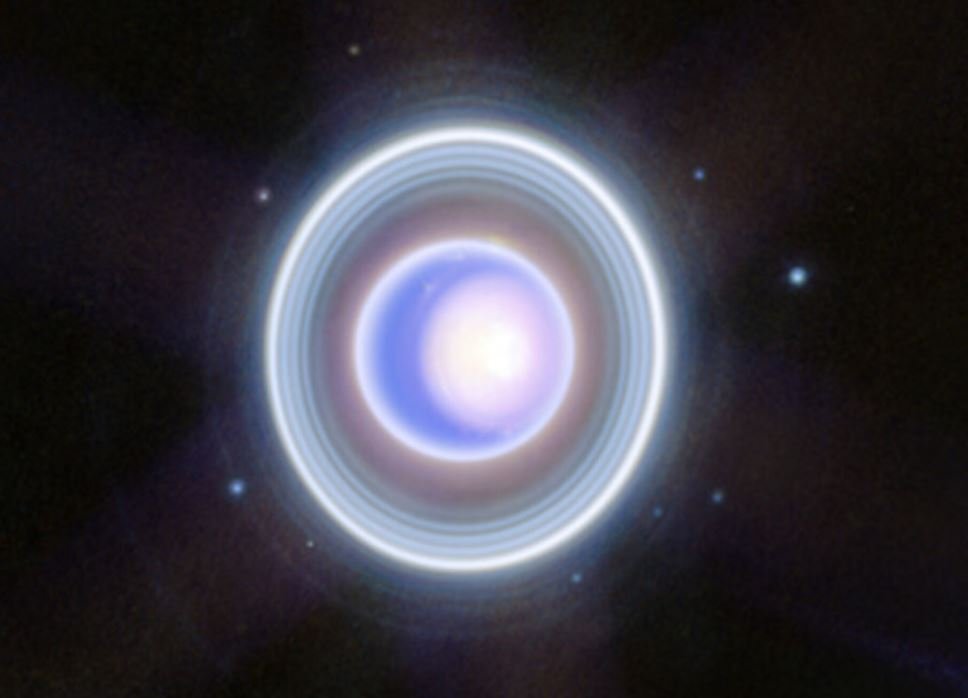Although we are approaching the end of 2023, James Webb, Hubble and Euclid space telescopes continue their work in space as normal; So they continue to collect fascinating data from different parts of the universe. As in previous months, in December Telescope instruments have helped solve some astronomical mysteries and capture fantastic images.
Using space photographs and astronomical data, scientists try to understand how the universe works and the meaning of different natural phenomena. The new images include galactic systems, star clusters, supernova remnants and even a close-up of Uranus.
Check out 5 amazing images from NASA in December
The United States National Aeronautics and Space Administration (NASA), the European Space Agency (ESA) and the Canadian Space Agency (CSA) have published incredible new photographs of different parts of the universe using spacecraft of different telescopes. For example, an image that presents the extraordinary beauty of Uranus.
Using data from the near-infrared camera (NIRCam), James Webb astronomers were able to piece together a close-up image of Uranus. The photo shows the planet’s rings, northern polar cap, white inner cap, and nine moons close to Uranus; There are 27 months in total.
“A day on Uranus lasts about 17 hours, so the planet’s rotation is relatively fast. This makes it extremely difficult for observatories with sharp eyes like Webb to capture a single image of the entire planet. “This image combines longer and shorter exposures of this dynamic system to correct for these small changes over the observation period,” explains NASA.
Arp-Madore Galaxy 2105-332
The image of the Arp-Madore 2105-33 galaxy system shows a pair of interacting galaxies, one smaller than the other. It is possible to observe the galaxy 2MASX J21080752-3314337 on the left and the galaxy 2MASX J21080362-3313196 on the right. Despite the complex names, both are used as references for astronomical coordinates of the region.

“Both galaxies are of the type known as emission line galaxies. This simply means that when observed with spectrometers, the spectra of both galaxies show characteristic bright peaks known as emission lines. This is different from, for example, galaxies with absorption lines whose spectra contain different gaps, known as absorption lines,” explained an official statement.
Star cluster IC 348
The image shows the central region of the star cluster, known as IC 348, with hairlike filaments. Scientists also detected three brown dwarf stars in the same region with a mass approximately eight times that of Jupiter. The most interesting thing is that One of these stars is three to four times more massive than Jupiter; This is a fact that challenges current knowledge of star formation.
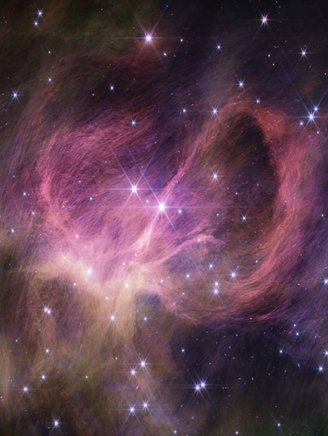
“The thin veils that fill the image are interstellar material that reflects light from stars in the cluster known as a reflection nebula. The material also contains carbon-containing molecules known as polycyclic aromatic hydrocarbons, or PAHs,” the scientists explain.
Cas A supernova remnant
In April 2023, the James Webb Space Telescope (JWST) photographed the supernova remnant Cassiopeia A (Cas A) from the MIRI instrument. A new image was collected in December, but this time from NIRCam. Both data suggest new features in the innermost layer of the remnant, some of which were only detected with MIRI.
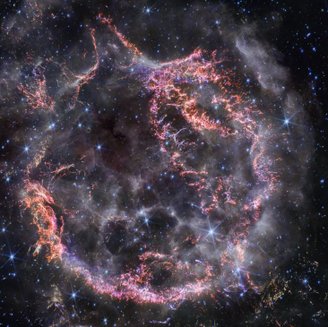
“Infrared light is invisible to our eyes, so image processors and scientists convert light at these wavelengths into visible colors. In this newest image of Cas A, the colors were assigned to different NIRCam filters, and each of these colors suggests a different activity occurring within the object.” explains NASA.
NGC 2210 cluster
NGC 2210 is a globular cluster. It is in the satellite galaxy of the Large Magellanic Cloud (LMC), which is probably 11.6 billion years old. Spheroids are long-lasting clusters connected to millions of stars; For this reason, they are often the subject of study by astronomers trying to understand the oldest stars in the universe.
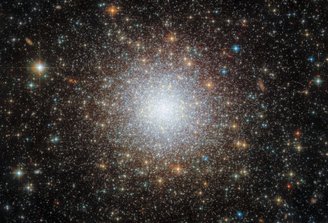
“This ancient but relatively young cluster is an interesting source of research as well as being extremely beautiful with its very dense population of stars. The night sky will look very different from the perspective of an inhabitant of a planet orbiting one of the stars at the center of a globular cluster: one that is thousands of times more populated.” In a stellar environment, the sky would appear to be full of stars than ours.” It is described in a publication about the visual as follows.
Abell 3192 galaxy clusters
Before the year was out, the Hubble Space Telescope took a stunning photo of the galaxy cluster known as Abell 3192. When it was first observed in 1989, scientists thought it was just a galaxy cluster, but More recent observations show that its mass is concentrated in two separate points. In other words, the region hosts two independent galaxy clusters.
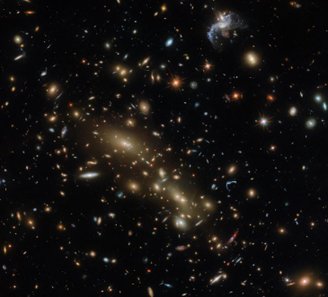
“Like all galaxy clusters, this galaxy is filled with hot gas that emits powerful “It bends time perceptibly, turning it into a gravitational lens.” mail
Did you like the content? So, stay up to date with all your astronomy-related curiosities on TecMundo. If you wish, take the opportunity to understand how the James Webb Telescope reveals the details of Neptune’s rings in a new image.
Source: Tec Mundo
I’m Blaine Morgan, an experienced journalist and writer with over 8 years of experience in the tech industry. My expertise lies in writing about technology news and trends, covering everything from cutting-edge gadgets to emerging software developments. I’ve written for several leading publications including Gadget Onus where I am an author.






